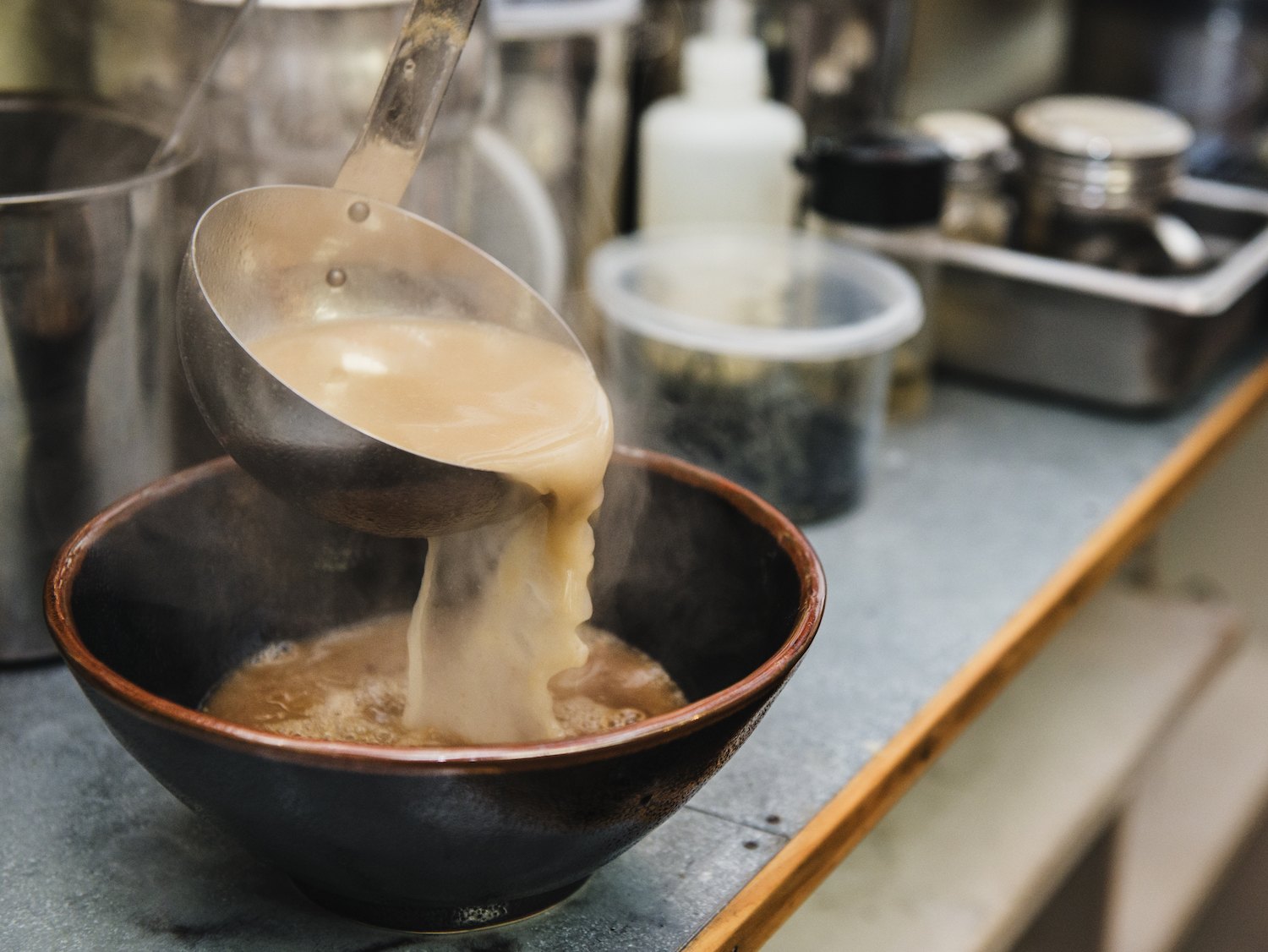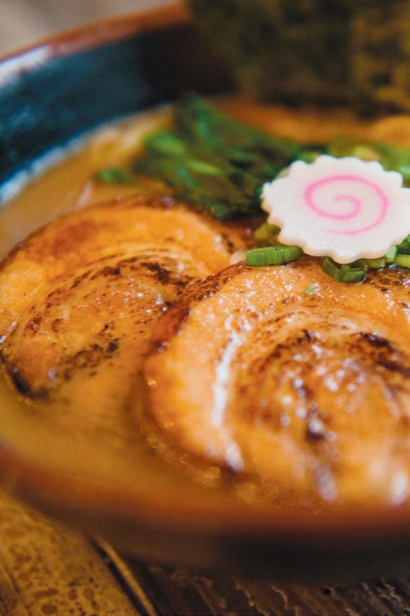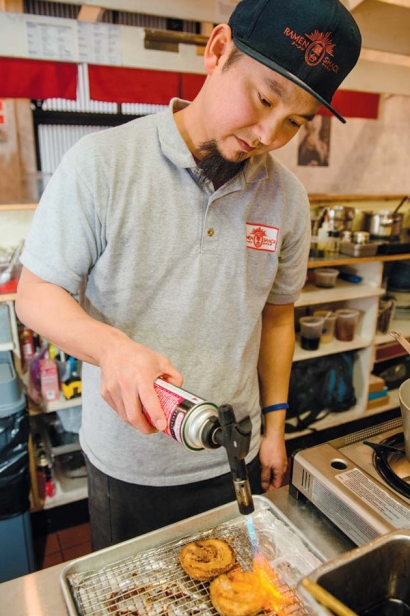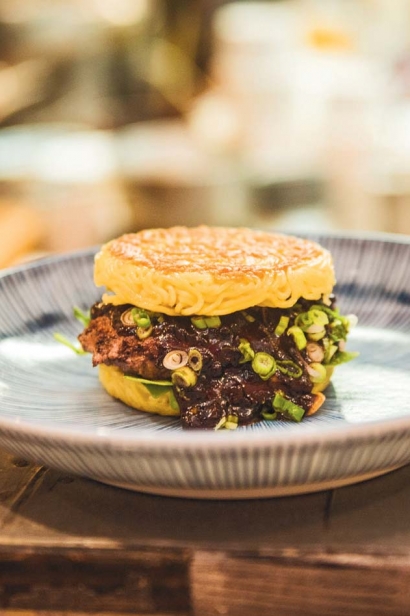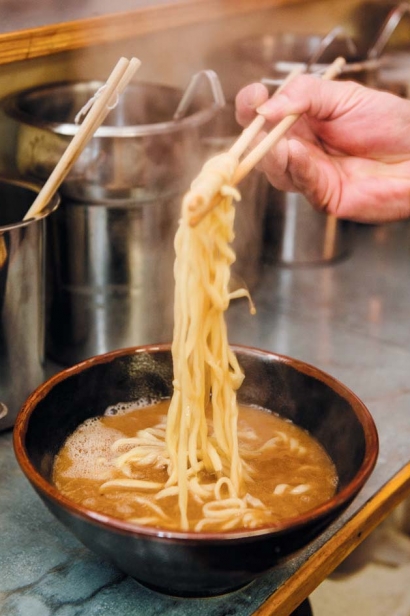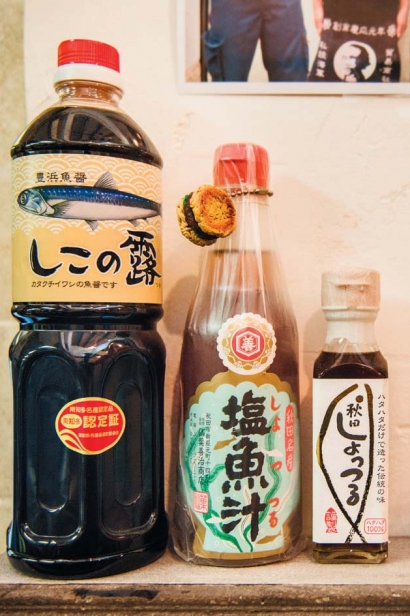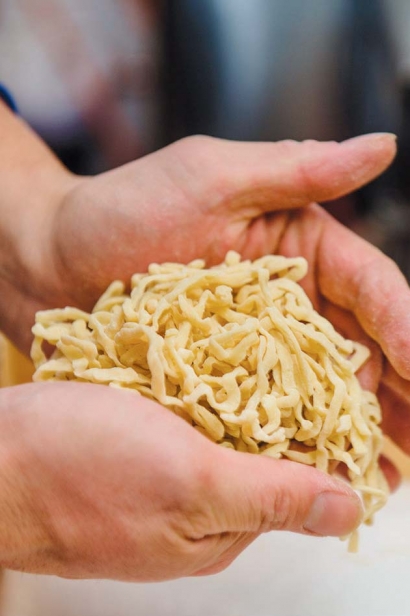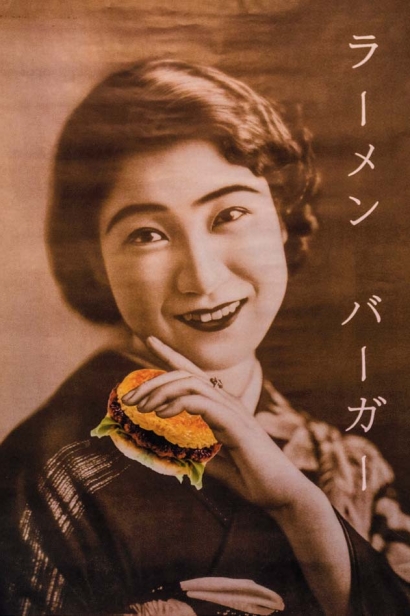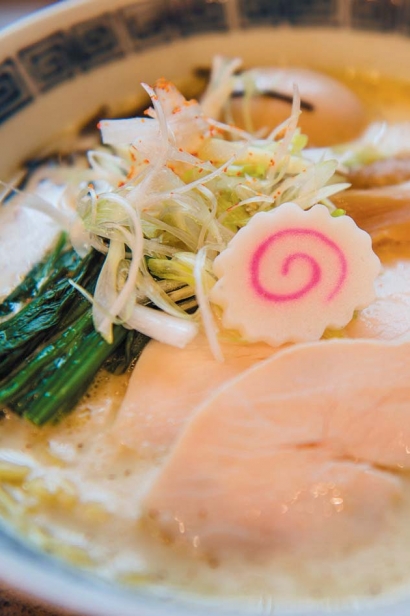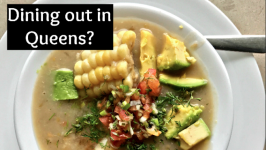Ramen You'll Want to Eat Every Day
Plenty of wild cards were in play when Keizo Shimamoto launched Go Ramen Go Life in September.
One was the fact that Shimamoto, who gained a following with his Original Ramen Burger at Brooklyn Flea’s Smorgasburg, was opening the restaurant in his prep kitchen. It’s small, especially for a chef accustomed to volume. There are six stools at a bar overlooking the kitchen, and four—five, max— bench seats facing a window to the street.
And the street: That was the real wild card. Go Ramen Go Life is on 40th Avenue, tucked between a corner deligrocery with a 24-hour grill and a Liberty Tax Service storefront. It’s directly across from the Queensbridge Houses, the largest housing project in the United States, designated a “high crime” area by the city in 2014 (serious crime fell 33% in 2015).
Gentrification hasn’t touched this pocket of Long Island City, where taxi drivers double park while they order from Kennedy Fried Chicken or an Indian-Pakistani-Bangladeshi takeout counter next to a huge wall mural of hip-hop artist Nas, himself a restaurateur. Unlike Long Island City’s other ramen restaurants, which are steps from new luxury apartments, where it’s not uncommon to see lines forming on the sidewalk, Shimamoto wasn’t starting out with a ready-made, ramen-crazed, neighborhood clientele.
Shimamoto didn’t plan to become an East Coast ramen chef. Raised in Los Angeles by Japanese-born parents, he became a computer programmer and was pretty happy with his work—until the subprime mortgage crisis. The timing seemed right for a trip to Japan, so in 2008 he set out with the goal of eating his way through the country’s “regions of ramen,” blogging as he slurped.
The trip was revelatory and life-changing. “Growing up, ramen was always a comfort food,” he said. Post-trip, it became a calling. He quit his job and moved to Japan, this time to learn all he could about making ramen. He apprenticed with Ivan Orkin, owner of the eponymous Ivan Ramen, whom he perceived as more approachable than “grumpy old ramen chefs.” Four months with Orkin led to opportunities to train elsewhere, and Shimamoto took full advantage. Despite the intensity of his self-styled stages, he found time to blog—207 posts that year—and, of course, to eat ramen. He eats hundreds of bowls each year (his personal best was 600 in 2010), and the dish has never lost its appeal.
Now, he wants to use the intimacy of his storefront to share his passion for ramen with customers. “I want them to feel how I felt when I was traveling around Japan,” he says, curious, alive and sated. That’s why he has 11 ramen bowls on the regular menu (“more, on average, than any other ramen shop, anywhere,” he claims), and an additional three or four on the “secret” menu for regulars.
And yes, there are regulars. It turns out that the location of Go Ramen Go Life hasn’t been a liability at all. People seem hungry, he says, for something new, and lunch has been surprisingly busy, with employees from local businesses walking as far as four or five blocks to order the steaming soup bowls, priced $8–13, or one of his Ramen Burgers, which run $7–9. The first few months have been so successful that he’s extending service until 9pm on Fridays and Saturdays.
Now the only wild card he’s dealing with is the one that seems inevitable: becoming a celebrity chef. Shimamoto, who’s soft-spoken and somewhat reserved, wants to ward against that. “I would never think of myself as a celebrity chef. I don’t seek spotlight,” he says. “I’m just trying to make really good ramen that I want to eat every day.”
Keizo Shimamoto | @goramen
Go Ramen Go Life | @goramengolife
Original Ramen Burger
Smorgasburg | @smorgasburg
Nas | @nas
Ivan Orkin | @ramenjunkie
Ivan Ramen


